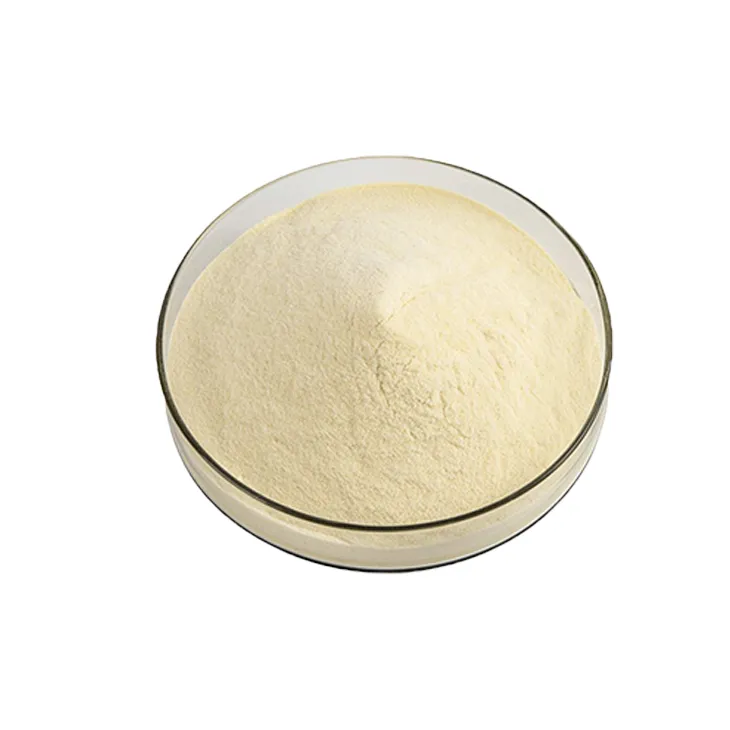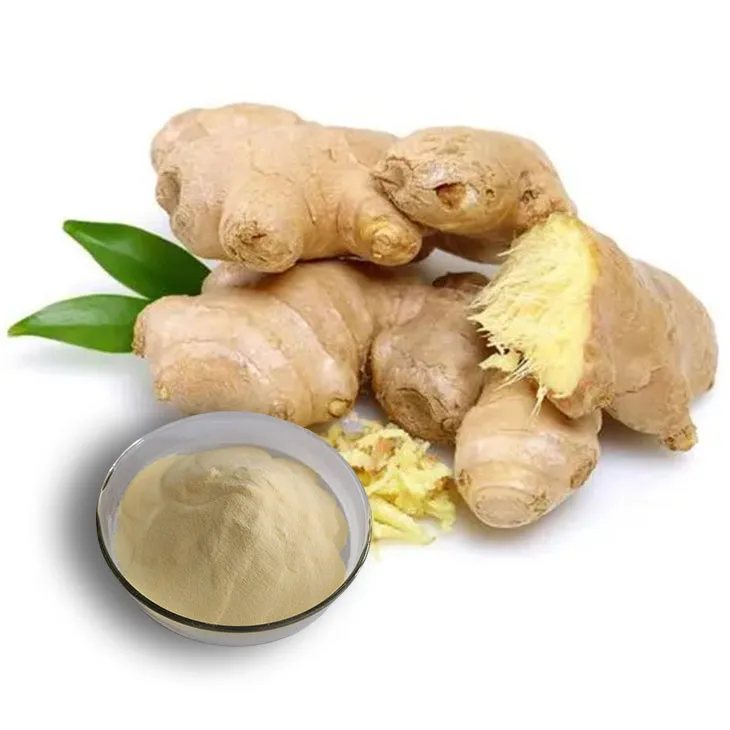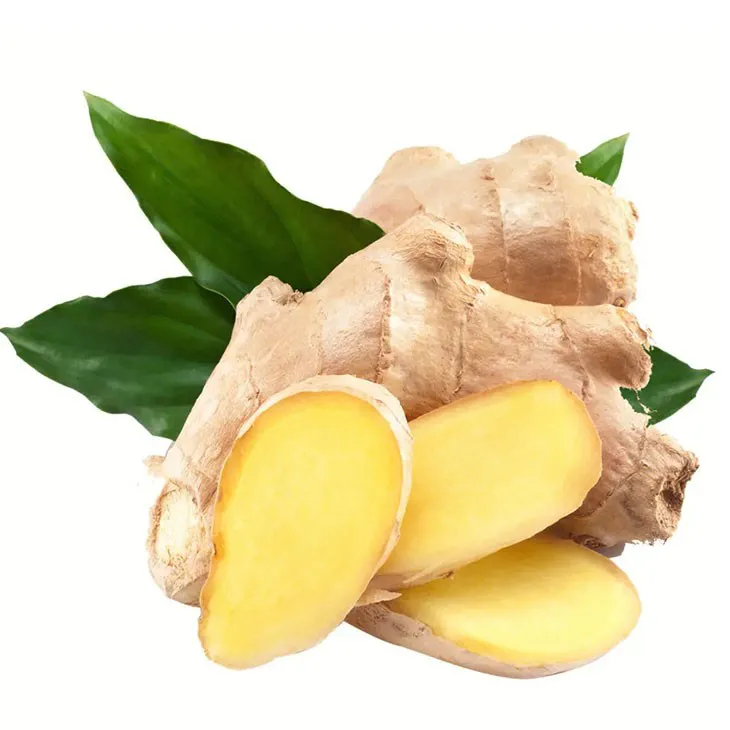- 0086-571-85302990
- sales@greenskybio.com
Ginger Extract: China vs. the United States
2024-11-28

1. Introduction
Ginger Extract has been attracting increasing attention globally in recent years. It is known for its various health benefits, such as anti - inflammatory, antioxidant, and anti - nausea properties. China and the United States, two major players in the global market, have different approaches to Ginger Extract. China, with its long - standing traditional medicine history, has a unique way of dealing with Ginger Extract. Meanwhile, the US, driven by scientific research and market demands, also has its own characteristics in this field. This article will conduct a comprehensive comparative analysis of ginger extract in these two countries from multiple aspects.

2. Raw Material Sourcing in China
2.1. Geographic Advantage
China has a vast territory, and many regions are suitable for ginger cultivation. Areas such as Shandong, Guangxi, and Yunnan are major ginger - producing regions. These regions have favorable natural conditions, including suitable climate, soil, and water resources, which ensure a large - scale and stable supply of ginger as raw materials. For example, Shandong province has a long - standing ginger - planting history. The local climate with four distinct seasons and fertile soil provides ideal conditions for ginger growth.2.2. Traditional Cultivation Methods
Chinese farmers often use traditional cultivation methods passed down from generation to generation. These methods emphasize the harmony between nature and crops. For instance, they pay attention to the timing of sowing, fertilization, and irrigation according to the lunar calendar and the growth cycle of ginger. Organic fertilizers are also widely used to ensure the quality of ginger. However, compared with modern agricultural techniques, some traditional methods may be less efficient in terms of yield per unit area.2.3. Quality Control in China
In China, the quality control of ginger as raw material mainly focuses on compliance with national and industry standards. Government departments regularly carry out inspections on ginger - producing areas to ensure that ginger meets safety and quality requirements. For example, they test for pesticide residues, heavy metal content, and freshness. However, due to the large number of small - scale farmers in China, it can be a challenge to ensure uniform quality across the entire supply chain.
3. Raw Material Sourcing in the United States
3.1. Modern Agricultural Production
The United States adopts modern agricultural production techniques for ginger cultivation. Large - scale farms use advanced machinery for sowing, harvesting, and processing ginger. This not only improves production efficiency but also can ensure a relatively stable output. For example, precision agriculture techniques are used to accurately control the amount of water, fertilizers, and pesticides, which helps to improve the quality and yield of ginger.3.2. Import Dependence
Although the US has its own ginger - producing areas, it still has a certain degree of import dependence. Ginger is mainly imported from countries such as China and India. The US imports ginger to meet the diverse needs of the domestic market, especially for high - quality ginger products. Imported ginger needs to meet strict US customs and quality inspection standards.3.3. Stringent Quality Standards
The US has very stringent quality standards for ginger as raw material. In addition to the general tests for pesticide residues, heavy metal content, etc., it also has specific requirements for genetic modification and microbiological safety. These high - quality standards ensure that the ginger used for extraction in the US is of high quality but may also increase the cost of raw materials.
4. Extraction Methods in China
4.1. Traditional Extraction Techniques
In China, traditional extraction techniques play an important role in ginger extract production. One of the common methods is water - based extraction. Ginger is soaked in water, and then through processes such as heating and filtration, the active ingredients in ginger are extracted into the water solution. Another traditional method is alcohol - based extraction, which uses ethanol or other alcohols to extract gingerol and other active substances. These traditional methods have the advantage of being simple and in line with the concept of traditional Chinese medicine, which emphasizes the overall extraction of natural substances.4.2. Integration of Modern Technology
In recent years, China has also begun to integrate modern technology into ginger extract production. For example, some enterprises have adopted ultrasonic - assisted extraction technology. This technology can effectively improve the extraction efficiency and shorten the extraction time by using ultrasonic waves to break the cell walls of ginger. However, compared with the United States, the overall application level of modern technology in Chinese ginger extract production is still relatively low.4.3. Focus on Holistic Properties
Chinese ginger extract production often focuses on the holistic properties of ginger. That is, not only extracting a single active ingredient but also trying to retain all the components in ginger that are beneficial to the human body. This is in line with the traditional Chinese medicine theory that believes in the synergy of various components in herbs to achieve the best curative effect.
5. Extraction Methods in the United States
5.1. High - Tech - Driven Research
The United States is at the forefront of high - tech - driven research in ginger extract extraction. Scientists in the US use advanced analytical instruments such as chromatography - mass spectrometry to study the chemical composition of ginger in detail. Based on this research, they develop more targeted extraction methods. For example, supercritical fluid extraction technology is widely used in the US. This technology can precisely extract specific active ingredients from ginger under specific temperature and pressure conditions, which has high extraction efficiency and selectivity.5.2. Standardization and Reproducibility
US ginger extract extraction methods pay great attention to standardization and reproducibility. Each step of the extraction process is strictly controlled according to scientific standards. This ensures that the quality of ginger extract products is consistent and can meet the requirements of large - scale industrial production and scientific research. For example, in the production of ginger extract for pharmaceutical use, strict quality control procedures are followed to ensure the safety and effectiveness of the product.5.3. Emphasis on Single Active Ingredients
Unlike China's focus on holistic properties, the US often emphasizes the extraction of single active ingredients from ginger. For example, they focus on extracting gingerol, which has strong anti - inflammatory properties. This is mainly because the US market has a high demand for products with clear pharmacological mechanisms and high - purity active ingredients, especially in the fields of pharmaceuticals and high - end dietary supplements.6. Product Applications in China
6.1. Traditional Medicine Applications
In China, ginger extract has a long - standing application in traditional medicine. It is often used to treat symptoms such as colds, stomach discomfort, and nausea. For example, in some traditional Chinese medicine prescriptions, ginger extract is combined with other herbs to regulate the body's qi and blood, expel cold, and relieve pain. These applications are based on the theoretical system of traditional Chinese medicine and have been verified by thousands of years of clinical practice.6.2. Food and Beverage Industry
Ginger extract is also widely used in the Chinese food and beverage industry. It is added to products such as ginger tea, ginger - flavored candies, and seasonings. The addition of ginger extract not only adds a unique flavor to these products but also endows them with certain health - promoting functions. For example, ginger tea is very popular in China, especially in cold winter, as it can warm the body and relieve cold symptoms.6.3. Cosmetics and Skincare
In recent years, ginger extract has gradually been applied in the cosmetics and skincare industry in China. It is believed that ginger extract has antioxidant and anti - aging properties, which can be used to develop products such as facial creams, lotions, and masks. However, compared with traditional medicine and food applications, the application in the cosmetics field is still in its infancy.7. Product Applications in the United States
7.1. Pharmaceutical and Nutraceutical Applications
In the United States, ginger extract is mainly used in the pharmaceutical and nutraceutical fields. Due to its anti - inflammatory and anti - nausea properties, it is often developed into drugs or dietary supplements to treat conditions such as arthritis, motion sickness, and morning sickness. For example, some over - the - counter drugs for motion sickness contain ginger extract as an active ingredient. These products need to meet strict FDA (Food and Drug Administration) regulations in terms of safety, efficacy, and quality control.7.2. Functional Food and Beverage Market
The US functional food and beverage market also has a certain demand for ginger extract. Ginger - flavored energy drinks, sports drinks, and fortified foods are becoming more and more popular. These products often highlight the health - promoting functions of ginger extract, such as enhancing immunity and improving digestion. However, the competition in this market is fierce, and products need to have unique selling points to stand out.7.3. Cosmetics and Personal Care
Similar to China, the US also applies ginger extract in the cosmetics and personal care industry. However, due to the more developed beauty market in the US, ginger extract - based products are more diverse, including hair care products, body lotions, and lip balms. These products often target consumers who are interested in natural and healthy beauty products.8. Impact on the Global Market
8.1. China's Influence
China, as a major ginger - producing and ginger - extract - using country, has a certain influence on the global market. China's traditional medicine market provides a large - scale application scenario for ginger extract. At the same time, China's low - cost production model of ginger extract also has an impact on the global price system. However, due to relatively weak international marketing and brand building, Chinese ginger extract products are mainly sold in the domestic market and some Asian - Pacific regions.8.2. United States' Influence
The United States, with its strong scientific research strength and market - oriented operation model, has a great influence on the high - end ginger extract market. US - made ginger extract products, especially those for pharmaceutical and high - end nutraceutical applications, are highly recognized in the international market. The US also plays an important role in promoting the standardization and internationalization of ginger extract products through strict quality control and international cooperation.8.3. Future Trends and Cooperation Opportunities
In the future, with the increasing global demand for natural health products, there will be more cooperation opportunities between China and the United States in the ginger extract field. China can learn from the US in terms of scientific research, quality control, and international marketing. The US can also explore the potential of Chinese traditional medicine applications of ginger extract. For example, joint research projects can be carried out to develop new ginger - extract - based products that combine the advantages of both countries.9. Conclusion
In conclusion, China and the United States have different characteristics in ginger extract in terms of raw material sourcing, extraction methods, and product applications. China is deeply influenced by traditional culture and medicine, while the United States is more driven by scientific research and market orientation. These differences not only reflect the different development paths of the two countries but also have important impacts on the global ginger extract market. Looking forward, cooperation between the two countries in this field has great potential, which can promote the further development of ginger extract products and better meet the global demand for natural and healthy products.
FAQ:
Question 1: How does China source raw materials for ginger extract?
In China, ginger is sourced from a variety of regions with suitable climates for ginger cultivation. Many local farmers grow ginger, and they often follow traditional agricultural practices. Ginger is typically harvested when it reaches maturity, and then selected based on quality criteria such as size, shape, and absence of diseases. Some regions may have their own unique varieties of ginger, which are also used for extraction.
Question 2: What are the main scientific research directions in the US for ginger extract?
In the US, the scientific research on ginger extract mainly focuses on aspects such as its bioactive compounds, potential health benefits, and pharmacological mechanisms. For example, researchers study how ginger extract can affect inflammation, antioxidant activity, and its possible role in preventing certain diseases like cancer or cardiovascular diseases. They also conduct research on improving the extraction efficiency and standardizing the composition of ginger extract.
Question 3: How does the traditional Chinese approach to ginger extract influence its final product applications?
The traditional Chinese approach, which is deeply influenced by traditional medicine, often leads to ginger extract being used in a wide range of traditional health - related applications. It may be used in herbal remedies for digestive problems, cold prevention, and general well - being. In addition, it is also used in some traditional Chinese medicine formulations, where it combines with other herbs to achieve synergistic effects. This holistic view of ginger extract has led to its use in products like traditional Chinese herbal teas and tonics.
Question 4: What are the market - oriented strategies for ginger extract in the US?
In the US, market - oriented strategies for ginger extract include product innovation to meet consumer demands for health and wellness. This may involve developing ginger extract - based dietary supplements in various forms such as capsules, tablets, and powders. There is also a focus on marketing ginger extract - containing products for specific health claims, such as reducing nausea or improving joint health. Branding and advertising play important roles in promoting these products to consumers.
Question 5: How do the differences between China and the US in ginger extract development affect the global market?
The differences between China and the US in ginger extract development have a significant impact on the global market. China's traditional approach provides a rich source of knowledge and a variety of product forms based on historical use. The US's scientific and market - driven model often leads to more standardized and targeted products. This diversity enriches the global market, offering consumers different choices. China may supply more traditional - style products, while the US may contribute more to high - tech and scientifically - backed products. The competition between the two also promotes innovation and the improvement of product quality in the global ginger extract market.
Related literature
- Ginger Extract: Traditional and Modern Perspectives in China"
- "The Scientific Research on Ginger Extract in the United States: A Review"
- "Global Ginger Extract Market: Influence of Chinese and American Approaches"
- ▶ Hesperidin
- ▶ Citrus Bioflavonoids
- ▶ Plant Extract
- ▶ lycopene
- ▶ Diosmin
- ▶ Grape seed extract
- ▶ Sea buckthorn Juice Powder
- ▶ Fruit Juice Powder
- ▶ Hops Extract
- ▶ Artichoke Extract
- ▶ Mushroom extract
- ▶ Astaxanthin
- ▶ Green Tea Extract
- ▶ Curcumin
- ▶ Horse Chestnut Extract
- ▶ Other Product
- ▶ Boswellia Serrata Extract
- ▶ Resveratrol
- ▶ Marigold Extract
- ▶ Grape Leaf Extract
- ▶ New Product
- ▶ Aminolevulinic acid
- ▶ Cranberry Extract
- ▶ Red Yeast Rice
- ▶ Red Wine Extract
-
Grapefruit Seed Extract Powder
2024-11-28
-
Alfalfa Meal
2024-11-28
-
Clove Powder
2024-11-28
-
Pueraria Lobata Extract
2024-11-28
-
Polygonum multiflorum extract
2024-11-28
-
American Ginseng Root Extract
2024-11-28
-
Berberis aristata Extract
2024-11-28
-
Yohimbine Bark Extract
2024-11-28
-
Black Garlic Extract
2024-11-28
-
Artichoke Leaf Extract
2024-11-28





















